Gold price waits for rates clues from Jackson Hole
Political turmoil in the US has the potential to 'help gold in the short and longer term'
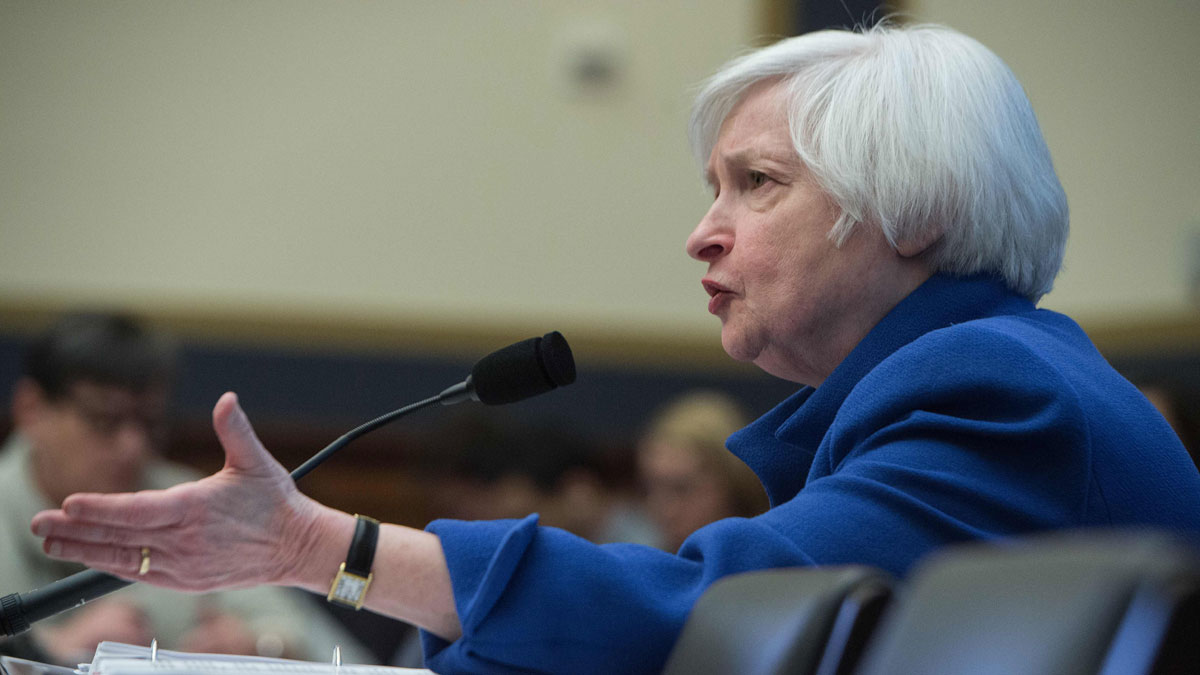
Gold price languishes after Indian surprise
5 March
The gold price climbed very slightly this morning after three days of losses resulting from India's surprise decision to maintain an import duty on the metal.
Traders believe that US jobs data due on Friday might lead to a rally, reversing the downward trend that has seen the gold price drop from $1,300 per ounce at the end of January to little over $1,200 today.
The Week
Escape your echo chamber. Get the facts behind the news, plus analysis from multiple perspectives.

Sign up for The Week's Free Newsletters
From our morning news briefing to a weekly Good News Newsletter, get the best of The Week delivered directly to your inbox.
From our morning news briefing to a weekly Good News Newsletter, get the best of The Week delivered directly to your inbox.
At 1.45pm, gold was trading at $1,202 per ounce, up $1.80 on yesterday's close.
"The markets are in the doldrums, interest is low and real business is scarce," Marex Spectron's David Govett told Bullion Vault. "I doubt we will see a lot of excitement until Friday when hopefully NFPs [Non Farm Payrolls] might provide us with some impetus one way or the other."
The gold price has been languishing since India, the world's largest consumer of gold, confounded expectations that it would reduce an import duty on gold, thereby helping to to boost demand, the Wall Street Journal says.
Demand for gold tends to increase during periods of economic uncertainty as investors look to place their money in secure commodities. But when the global economy is more stable, the metal does less well "because it offers buyers no periodic payments, or yield", the WSJ says.
A free daily email with the biggest news stories of the day – and the best features from TheWeek.com
Vedant Mimani, who helps manage $80 million for ACGO Funds in Miami says that India's decision not to cut the import duty was yet another setback for gold traders. "You can add this to the long list of disappointments for gold," Mimani said. "Gold keeps trying to hang its hat on some sort of change or something positive around the corner that doesn't seem to materialise," he added.
The gold price has been falling towards $1,200, and could drop further if the US dollar continues to put pressure on precious metals, Bullion Desk says.
"Although gold is still holding its own above the psychologically important $1,200 per troy ounce mark, it is currently unable to make any further gains," Commerzbank noted. "Demand for gold has clearly been rather subdued of late."
Other metals: Silver rose slightly to $16.24, while palladium has fallen from six-month highs and was last at $826 per ounce and platinum was slightly up at $1,180.
Gold price rises after Greek deal slump
25 February
The gold price began to climb this morning after falling below the $1,200-per-ounce mark on Tuesday as progress in Greek bailout talks reduced demand for a hedge against economic turmoil.
Demand picked up in early-morning London trading, in part due to the return of the Chinese market after the Lunar New Year holiday.
At noon, gold was trading at $1,209 per troy ounce, up $4.60 on Monday’s close, but down from a session high of $1,212 during peak Asian trading hours.
Early on Monday morning the gold price had dipped to $1,190.90 – its lowest point in seven weeks – as markets responded to news of a Greek breakthrough, Bulliondesk.com reports.
"It does seem at the moment that, if you buy or sell gold around $10 away from where it starts in the morning, then you stand a very good chance of seeing it back to unchanged again. An odd way of trading, but one takes what one can get in this market," Marex Spectron’s David Govett said yesterday.
Yesterday the markets watched Federal Reserve chair Janet Yellen's address to the US Congress for signals of possible interest-rate increases – but in a careful speech, she suggested that such rises are not as imminent as some may have thought.
Gold prices have fallen over the course of the past year in part due to the gradual withdrawal of the Federal Reserve's quantitative easing programme, Forbes reports.
Gold is often used as an investment to hedge against economic weakness and inflation. The phasing out of quantitative easing in the US is viewed as a sign of economic growth – which in turn reduces demand for gold.
Yellen's outlook for the US economy is regarded as "important as far as gold prices are concerned", Forbes notes, because it gives an indication of when interest rates are likely to move.
Any interest rate rise "is likely to limit the upside to gold prices, as investors shift towards higher yielding assets", Forbes says.
Other metals made gains today, Bulliondesk.com reports. Silver followed gold higher to $16.50/16.55, and platinum was up $5 at $1,164/1,174 per ounce. Palladium was $13 higher at session peaks of $802/807.
Gold prices see 'small bounce' after three-week low on Friday
09 February
The price of gold edged higher this morning, but is yet to make much headway from its three-week low on Friday.
Gold reached a high of $1,243.60 per ounce on the New York Mercantile Exchange's Comex division this morning, after hitting a low of $1,228.25 on Friday and ending the day at $1,234.
The buying signals "potential bargain hunting" after Friday's slump, says Lynette Tan at the Bullion Desk.
The slight recovery came after disappointing Chinese trade data raised concerns about a deepening slowdown in its economy and prompted a fall in Asian equity markets. Chinese exports fell 3.3 per cent on the same period last year, while imports dropped 19.9 per cent, worse than analysts had expected.
Gold, which is often seen as an alternative investment to riskier assets such as equities, appears to have benefited from the weak Chinese data.
But Ronald Leung, chief dealer at Lee Cheong Gold Dealers in Hong Kong, suggests the "small bounce" may not hold as the "bigger factor influencing gold prices is still the timing of the interest rate hike in the United States".
Data showing strong US jobs growth stoked expectations of a hike in interest rates last week, which could dent demand for gold, a non-interest-bearing asset, and boost the dollar, says Reuters.
"The combination of a stronger USD and higher yields was a one-two punch for gold, setting off sizeable and sustained selling," said analyst James Steel from HSBC Securities, explaining last week's price fall.
Randgold Resources, the largest London-listed gold miner, has reported a sharp fall in annual profits, despite extracting a record amount of the precious metal from its mines in Mali, the Ivory Coast and the Democratic Republic of Congo last year. The record mining production failed to offset the sliding gold price, says the Daily Telegraph.
Gold price 2015: experts divided on whether metal will rise or fall
20 January
A top manager at one of the most popular funds focused on gold and gold mining shares says that gold will recover from its three-year slump in 2015, but other investment professionals are less convinced, saying that the price of gold will continue to fall.
Evy Hambro who manages the £1bn Blackrock Gold and General Fund told the Daily Telegraph that he believes that having fallen 40 per cent since summer 2011, the gold price has finally "bottomed-out", and is about to enter a "new stage".
Hambro argues that the European Central Bank is expected to print billions of new euros to try to prevent deflation and stimulate growth, which in turn is likely to boost European equity markets.
"In periods of uncertainty people reach out for gold as a safe asset. With this loose monetary policy around the world and fears around deflation, people will want to reach out for safe assets and gold is the natural place that people will move to as a store of wealth," Hambro said.
Colin Cieszynski, CMC Market's chief market strategist, ageed. "Increasing political, financial or economic tensions in the eurozone may force the ECB to take more decisive stimulus action to hold everything together," he said, "which may create a more favorable environment for gold this year,”
HSBC also raised its average gold price forecast for 2015, Bullion Desk notes, due to the growing strength of the dollar and global geopolitical fears which support gold's "safe-haven qualities".
But not everyone concurs. Stephen Jones, the chief investment officer at fund manager Kames Capital, says that the main reason people tend to buy gold is fear of inflation, but presently the conditions don't suggest widespread inflation is a threat.
"In fact, the fragility of the global economy remains such that any upward pressure in the form of interest rate rises – which we do not expect to see until the very end of 2015 at the earliest – could easily push economies into deflation," Jones said. "This is why any move into gold needs to be based on a very long-term view."
Some analysts say that attempting to forecast markets is simply impossible. Barry Ritholtz, writing for Bloomberg, says that predictions on markets, interest rates, gold, oil, economic growth and unemployment are a "silly waste of time".
Ritholtz points to the 2014 prediction by Peter Schiff of EuroPacific Capital last April that the "Federal Reserve's quantitative-easing program will push gold to $5,000 an ounce".
Rather than seeing the price of gold skyrocket, it closed 2014 just under $1,200, around 80 per cent lower than Schiff's forecast. Ritholtz concludes with a quote from economist JK Galbraith: "The only function of economic forecasting is to make astrology look respectable."
Gold price rallies after rate rise hint caused slump
18 December 2014
The gold price has rallied after a volatile day of trading yesterday, prompted by the news that the US Federal Reserve could raise interest rates sooner than expected because of continued low inflation.
The Fed's Federal Open Market Committee changed its previous prediction that it would keep interest rates low for a "considerable time" to saying it would remain "patient" before taking action. Fed chair Janet Yellen defined "patient" as meaning the Fed would wait for "at least a couple of meetings" before raising rates - suggesting an interest rate hike is on the cards for early next year.
After the news, gold prices for February delivery fell by 0.7% on the New York Mercantile Exchange's Comex division, reports Mining.com. On Wednesday afternoon, one ounce was fetching $1,186.60, down $7.70 on Tuesday's closing price but slightly recovered from a low of $1,182.
This morning, however, the ounce price had rallied to $1,198.20, says Bullion Desk. Mining.com saw yesterday's jitters as a "relatively subdued" response from the market.
Higher interest rates usually scare investors away from gold. As the precious metal produces no yield (interest or dividends), its price tends to drop when interest rate rises make other investments more attractive.
The soaring dollar - at more than an eight-year high against other currencies after the Fed announcement - is also a worry for gold traders. As the dollar rises, it is usual for gold prices to tail off.
INTL FCStone analyst Edward Meir told Bullion Desk: "We are not sure where all this will leave the gold market over the short term, as we were expecting a somewhat more dovish view with regard to policy wording, a modest retreat in the dollar and a possible bounce in gold."
Gold price: rally in crude oil spurs demand for gold
05 December
Gold prices rebounded strongly yesterday after crude oil futures advanced for the second time this week.
That led analysts to predict that inflation may drift higher than previously expected, which would erode the value of money held in cash and increase the attractiveness of gold as a hedge.
Fluctuations in the oil market have led to gold price volatility for almost nine months. Commodity traders often track energy prices because of their connection with consumer costs and therefore inflation, but the link is particularly strong at the moment.
The correlation between the price of gold and oil currently stands at 0.4, Bloomberg says, the highest in 17 months. A rating of 1 would mean that prices were "moving in lockstep".
Oil prices have fallen sharply in recent months due to the expectation that global markets will remain oversupplied in the medium to long term, after Opec's decision not to cut production. But crude oil futures rose on Wednesday after a US government report showed an unexpected decline in oil inventories.
"The move up in crude prices is giving gold the boost," Phil Streible, a senior commodity broker at R.J. O'Brien & Associates in Chicago, told Bloomberg after the news. "We are seeing some good solid buying."
David Govett, from UK-based commodities broker Marex Spectron, said: "Gold's rally is being put down to the move in oil and certainly there seems to be no other rational reason for the rally, other than continued short covering and certain players getting themselves long again up near the recent highs."
Today, the price of gold held at just above $1,200 per troy ounce in London trading. The market's attention will now turn to US jobs data, due out later today.
That may strengthen the dollar and reverse gold's recent gains in value.
"A positive reading would give the greenback another boost, putting gold prices under heavy downside pressure," Bullion Desk says.
The price of gold hit a three-week high today, partlybecause of the falling dollar, which slumped to an eight-month low.
The greenback has been down since the US Federal Reservechairwoman, Janet Yellen, said last month that she will keep interest rateslower for longer than many investors had hoped.
The low dollar has pushed buyers towards dollar-pricedassets – including gold. The precious metal reached a high of $1,262.60 anounce before easing back to $1,258.46 an ounce by 11.30am UK time - a rise of0.1 per cent.
Gold futures for June delivery, meanwhile, rose $2.60 anounce to $1,260.60. Silver also did well, rising above $16 an ounce for thefirst time in almost a month. It touched $16.06 at one point, before fallingback to $16.02 – a rise of 0.8 per cent.
Platinum also rose, climbing 0.6 per cent to $994 an ounce,while palladium was up 0.7 per cent at $549.05 an ounce.
"Negative yields in my opinion remain the key reasonfor buying gold, and silver. That story will not go away," Ole Hansen, of Saxo Bank, told Reuters.
"[Gold] found the expected resistance at $1,255 and itwas only when silver took off that it managed to get through.
"Silver ETF [exchange traded fund]holdings have risen strongly this past month while gold has been almost flat.That could indicate some switch in focus to silver, and the move yesterdayhighlighted that."
Financial authorities in Singapore and London are to look into the feasibility of creating a new gold price benchmark to allow Asian consumers to help determine the cost of gold and other precious metals. Asia's importance as a bullion consumer is "on the rise", says [1] Reuters, with China and India the world's biggest buyers. But because prices are set in London, traders experience intra-day volatility and issues with foreign exchange rates fluctuating overnight.
Now the Singapore Bullion Market Association (SBMA), London Bullion Market Association (LBMA) and Intercontinental Exchange Benchmark Administration (IBA) are setting up a joint study on the feasibility of developing a new benchmark in Singapore. The potential development of a "LBMA pre-AM gold price at 2pm Singapore time" benchmark was announced by Lim Hng Kiang, the city state's minister for trade and industry, at an industry conference today. The study would be an "important first step towards establishing a US dollar price discovery mechanism for gold during Asian business hours", he said, adding: "When in place, [the benchmark] will facilitate the timely tracking of Asian demand and allow participants in Asia to settle their trades within the same business day." SBMA chief executive Albert Cheng said: "We hope to make a reputable gold benchmark mechanism in London available to Asian users. If there's enough interest, the IBA will consider launching it early next year." Previous attempts to create a gold benchmark for Asia have proved unsuccessful. China launched a yuan-denominated benchmark in April this year, says Reuters, but it has "yet to gain traction". In October 2014, Singapore launched a 55lbs (25kg) wholesale gold contract that was hoped would create a regional benchmark – but that has not caught on neither. In London today, the gold price rose gradually as the US dollar fell back. It was up by 0.4 per cent at 2pm, at $1255 per ounce.
-
 A fentanyl vaccine may be on the horizon
A fentanyl vaccine may be on the horizonUnder the radar Taking a serious jab at the opioid epidemic
-
 The 8 best comedy TV series of 2025
The 8 best comedy TV series of 2025the week recommends From quarterlife crises to Hollywood satires, these were the funniest shows of 2025
-
 Codeword: December 16, 2025
Codeword: December 16, 2025The daily codeword puzzle from The Week
-
 What a rising gold price says about the global economy
What a rising gold price says about the global economyThe Explainer Institutions, central banks and speculators drive record surge amid ‘loss of trust’ in bond markets and US dollar
-
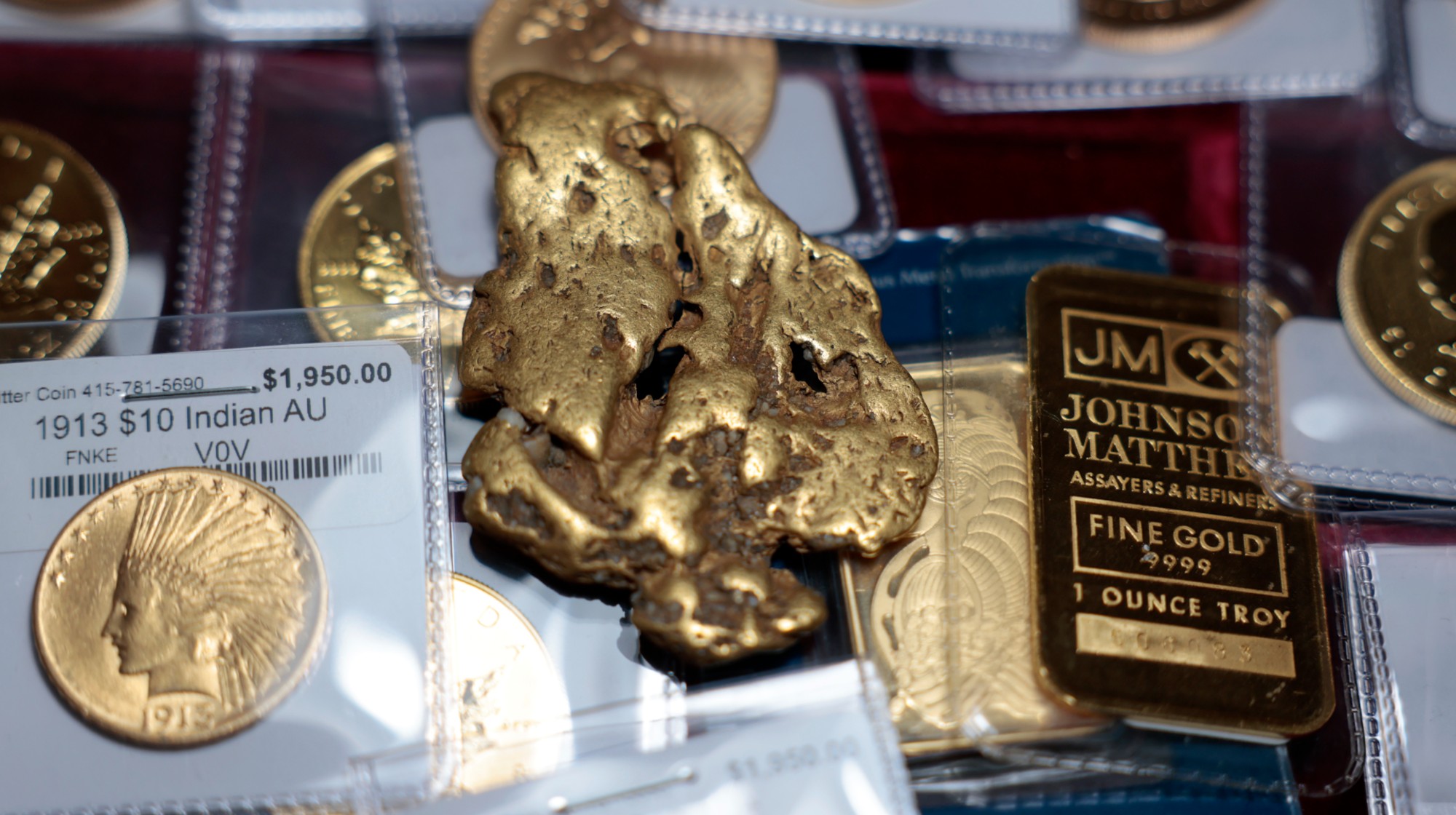 Gold tops $4K per ounce, signaling financial unease
Gold tops $4K per ounce, signaling financial uneaseSpeed Read Investors are worried about President Donald Trump’s trade war
-
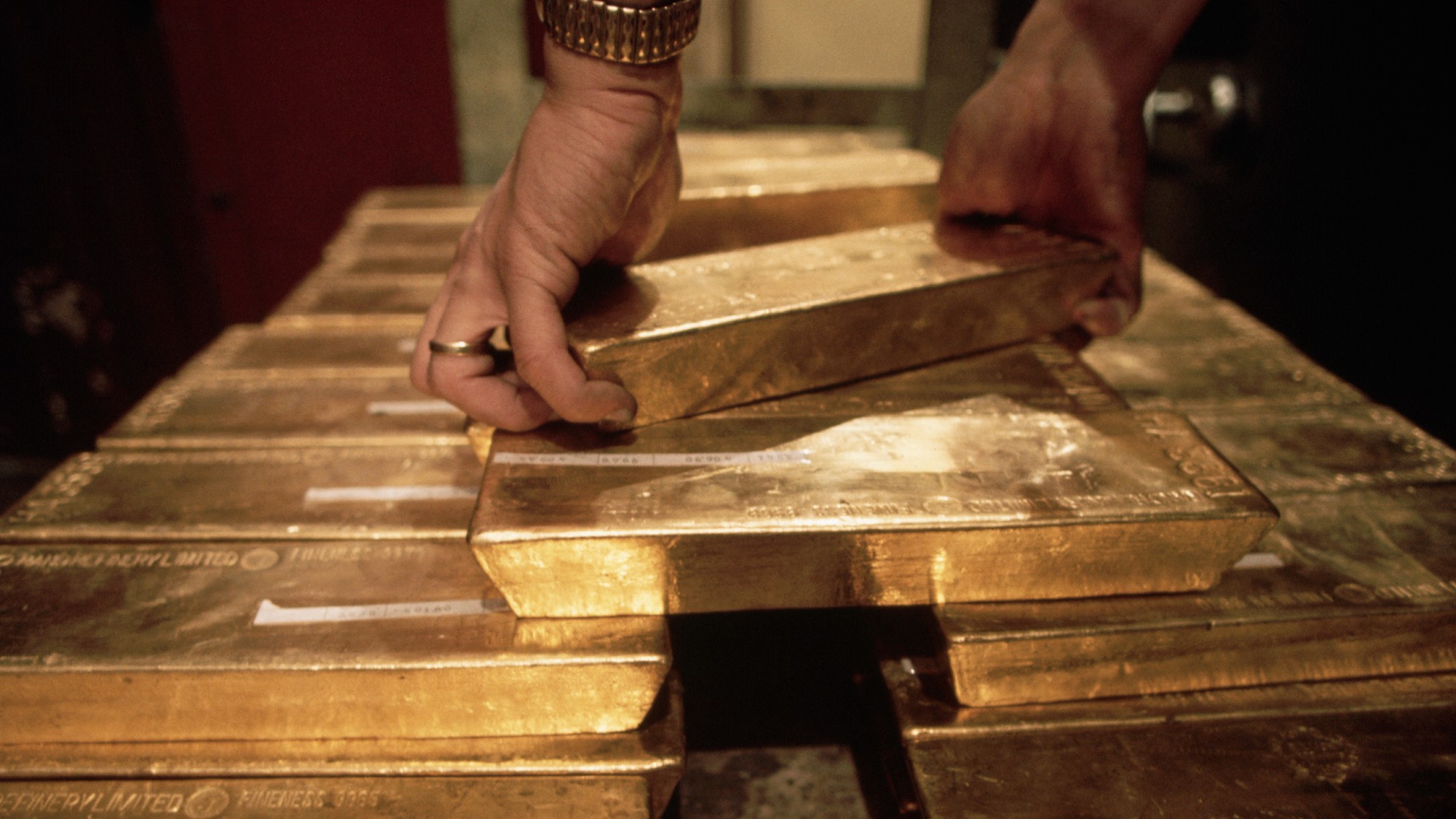 Safe harbor: Gold rises as stocks sink
Safe harbor: Gold rises as stocks sinkfeature It's a golden age for goldbugs
-
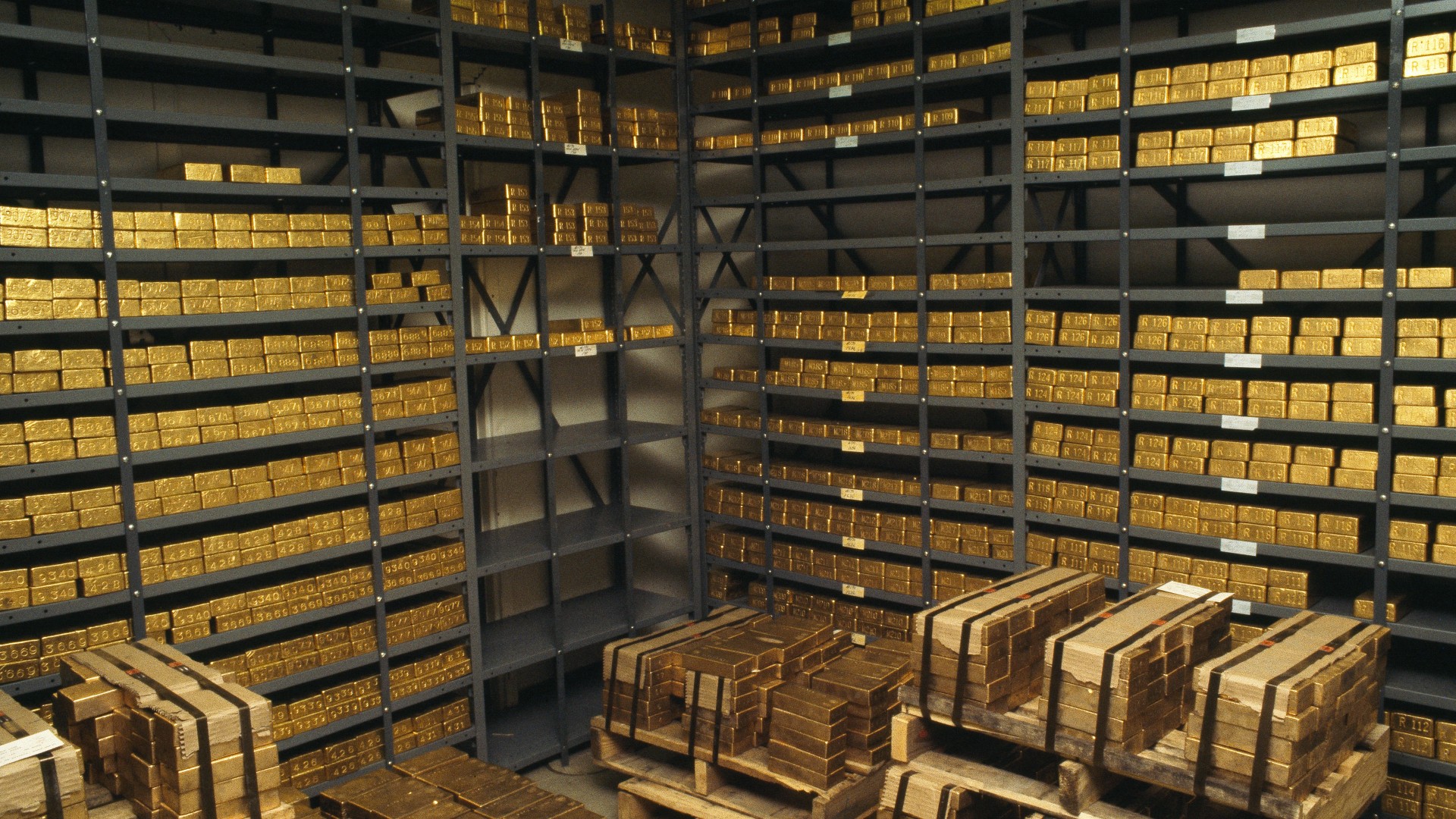 What rising gold prices can tell us about the economy in 2024
What rising gold prices can tell us about the economy in 2024The Explainer Market hits all-time high, boosted by a weakening US dollar and rising global tensions
-
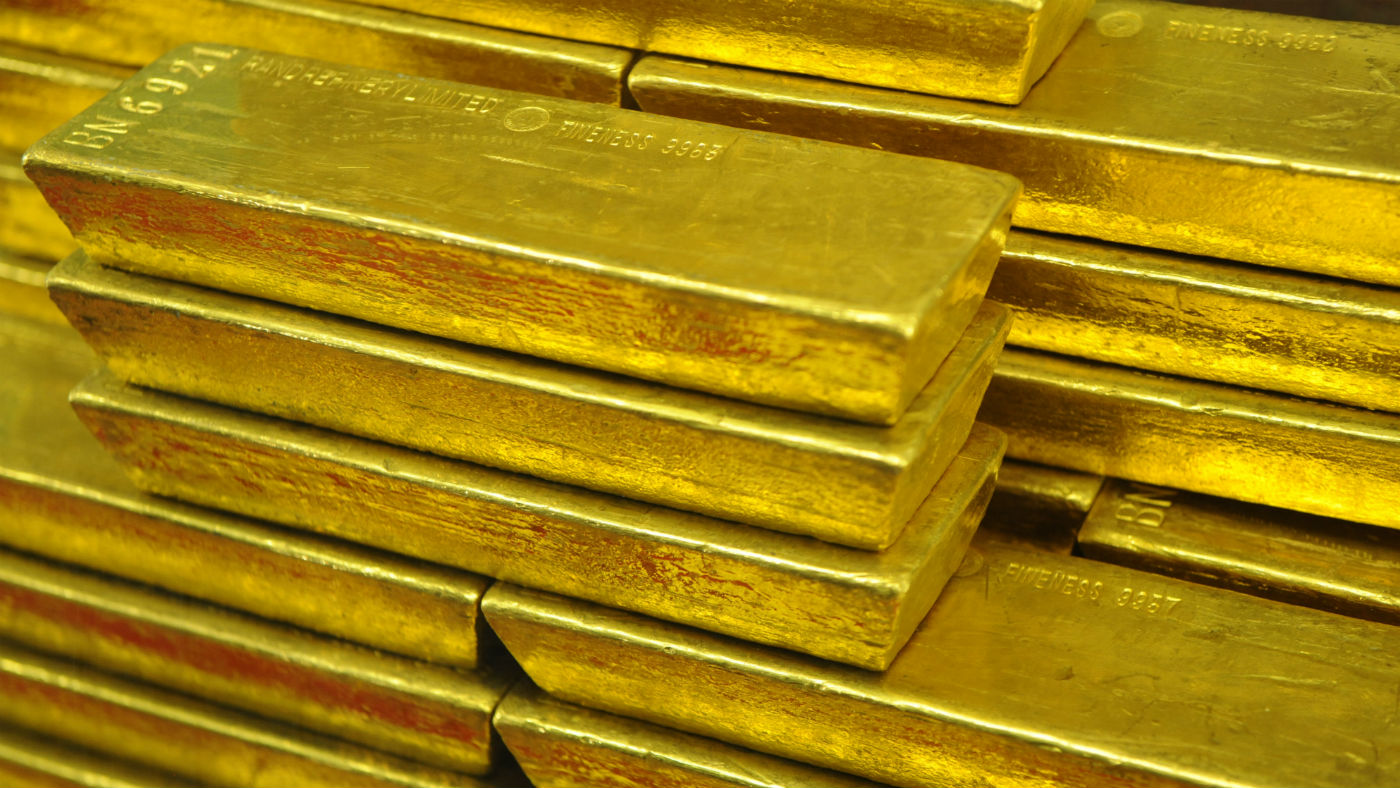 Gold’s ‘flash crash’: what the experts think
Gold’s ‘flash crash’: what the experts thinkfeature Bad news, good news and a loss of faith
-
 What is the price of gold and when is best to buy?
What is the price of gold and when is best to buy?Speed Read Economic and geopolitical uncertainty traditionally drives investors to reliable metal markets